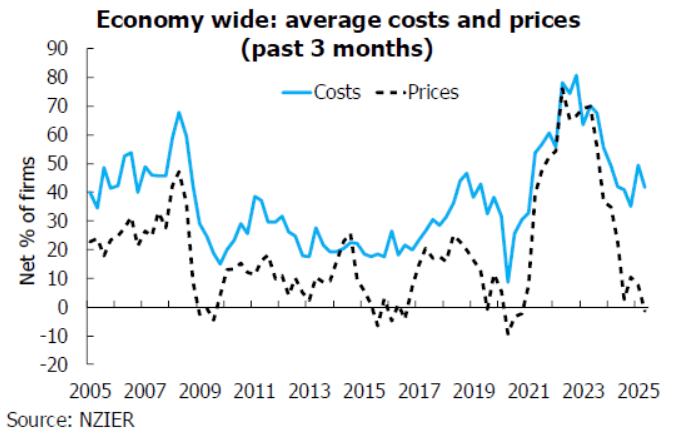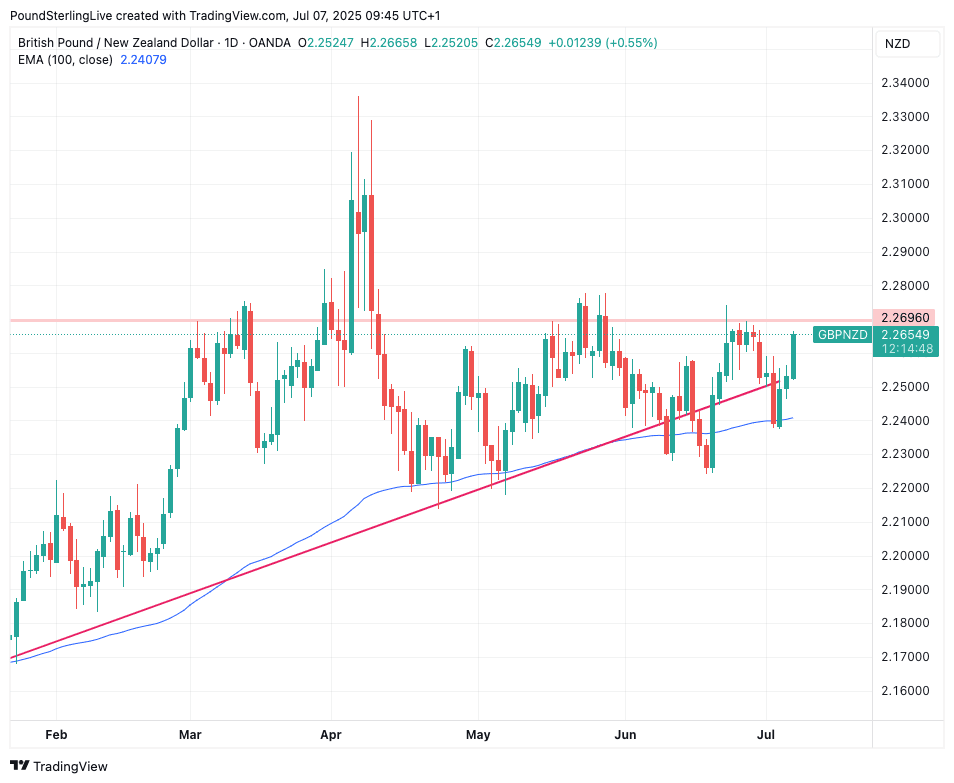
Image © Adobe Images
The New Zealand Dollar could be hit by a surprise RBNZ rate cut this week, while tariff headlines are also weighing.
A poor start to the week for risk-sensitive currencies allows the Pound to New Zealand Dollar exchange rate to drift higher in early Monday trade.
Traders are digesting new headlines out of the White House which raises uncertainty over the outlook for global trade, a development that is traditionally unhelpful for the New Zealand currency.
And then, there is the prospect of an unexpected RBNZ rate cut midweek that threatens to impose a domestic impulse to evolving weakness.
The RBNZ said at its May update that the July decision would depend on the ensuing data. Recent figures from the economy show that the data releases since that meeting reveal an economy that is witnessing slowing momentum, raising the odds of another cut this week.
"We see the net dataflow since May as dovish, easily justifying a cut," says Sharon Zollner, Chief Economist at ANZ. "We think the RBNZ should cut."
However, on balance, Zollner concedes the central bank will decide it is prudent and low-cost to wait for more data on inflation, which would be a signal that it would rather wait until August.
"The decision is far from simple and at ~20% we think the market is very much underestimating the chance of a cut next week," says Zollner.
Above: The NZIER survey shows inflationary pressures are fading, which can give the RBNZ some comfort should it decide to cut again.
Jarrod Kerr, Chief Economist at Kiwibank agrees:
"The RBNZ will likely keep the cash rate unchanged this Wednesday – the first pause in the easing cycle. We recommend a cut. The risks to the outlook are skewed to the downside. The Kiwi economy still requires more support."
If those expecting a cut, like ANZ, are proven correct, then the NZD would likely fall, as would be the expected reaction to such a surprise.
In fact, ANZ sees the odds of a surprise cut at around 40%, which gives a good odds-implied chance of a descent drop in GBP/NZD as a result of a central bank surprise.
Looking at the chart, the Pound to New Zealand Dollar exchange rate trades at 2.2650, which puts it back above the rising trend line that we have regularly been consulting in our Week Ahead Forecasts for some time:
Above: GBP/NZD at daily intervals.
The trendline has been punctured on a number of occassions recently, but breaks below it have been false, suggesting the uptrend in GBP/NZD, in place for many months now, is intact.
This makes a test of 2.2696 likely this week, ahead of a move to 2.28.
Should events transpire in NZD's favour, then the pullback in GBP/NZD would bring us back to the rising trend line, and a more instructive set of support in then form of the 100-day exponential moving average (EMA), located at 2.24.
The new week starts with NZD weakness amidst a rise in trade tensions, with U.S. President Donald Trump threatening a 10% tariff surcharge on nations that align with the China-led BRICS bloc owing to its "anti-American" agenda.
"Asian equities fell as Trump’s BRICS tariff warning unnerved investors," says a briefing from Saxo Bank. "Weakness in the Chinese economy and new tariffs on EU goods also weighed on regional sentiment."
There were hopes that the tariff end game was approaching, with the July 09 tariff deadline approaching, and news that final decisions on tariffs would start reaching trade partners from today. August 01 is when they will come into effect, according to U.S. Commerce Secretary, Howard Lutnick.
However, Trump's BRICS warning sends an important signal: that there might never be a resolution to tariffs, as he is quite content to continue leaning on tariffs as a geopolitical tool.
With tariff news likely to dominate the week ahead, it's little wonder those currencies that are sensitive to tariff headlines, like the NZ Dollar, are struggling.


